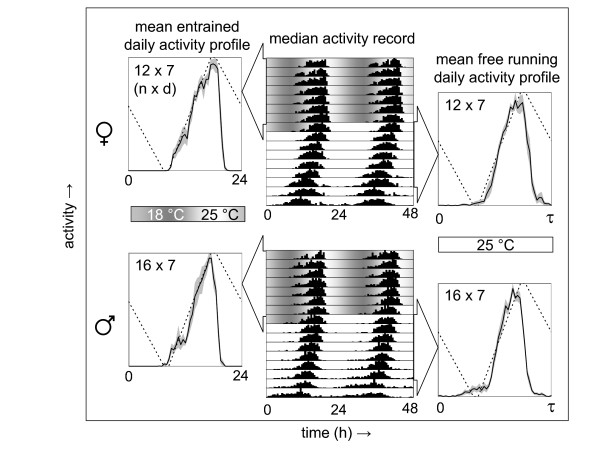Figure 1.
Efficient entrainment of circadian behavior to daily temperature gradients. Twelve female and sixteen male Canton-S flies were analyzed individually for synchronization of locomotor activity during and after exposure to a daily temperature gradient in constant darkness. The top and bottom center panels are double-plotted actograms in which the median locomotor activity per half-hour interval (black vertical bars) is plotted. Each row represents a 2-day interval (starting at 12 am), of which the second day is repeated as the first day on the next row. The activity records start with 7 days of exposure to a temperature cycle that gradually ramps between a 1-h interval at 18°C and a 1-h interval at 25°C. On the eighth day the temperature is held at 25°C and this condition is maintained thereafter (see profile Z5C4 in Additional file 2). The panels on the left and right represent the mean (solid line) ± Standard Error of the Mean (S.E.M.; shading) daily activity profiles for the indicated 7-day intervals. The left-hand panels correspond to the 24-h activity profile in the presence of the temperature gradient, whereas the right-hand panels correspond to the activity profile associated with the period length (τ; here ~23.5 h) measured during the subsequent free run at constant 25°C. The shading in the top part of the actograms and the dotted lines in the activity profiles represent the daily temperature gradient. The numbers of individual flies (n) and experimental days (d) contributing to each activity profile are indicated.

